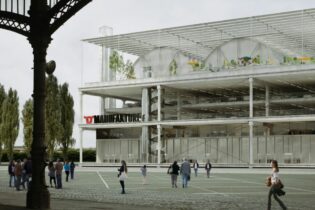‘Tivoli’ sustainable district
Laken, Belgium, Europe
Total technical installation cost: € 13.405.526,73 VAT excluded
Total construction cost: € 69.000.000,00 VAT excluded
Surface: 53.107 m² (17.135 m² surface of the site)
Certification: All houses fulfill the ‘EPBD-passive’ standard according to the Brussels Region* of which 35% zero-energy houses
(*Net heating demand ≤ 15kWh/m² year, primary energy consumption ≤ 45kWu/m².year and airtightness n50 = 0,6 volumes/u)
Winner Green Solutions Awards 2019 – Belgium Sustainable Construction Grand Prize
Winner Green Solutions Awards 2019 – Belgium Green Building Smart Building
Winner Green Solutions Awards 2019 – Belgium District Users’ Choice Award
Winner Publica Award 2018 in the category urban development and mobility
BREEAM Communities – Excellence
The Tivoli project comprises of a sustainable district in Brussels (Laken) consisting of 397 ‘EPBD-passive’ houses including 35% zero-energy houses, 2 child day care centers for each 62 children, 7 commercial spaces, an office for the public cleaning operatives of Brussels and underground parkings with 291 places. The difference between an ‘EPBD‑passive’ house and a zero-energy house is that the primary energy consumption in a zero-energy house is compensated by their own renewable energy production, through the use of PV panels.
The different homes, daycare centers, office and commercial spaces are spread over several buildings that belong to different plots. In total there are 5 plots of buildings. In each dwelling a satellite substation (plate heat exchanger) is foreseen, which is powered by the common underground heating network. Satellite boilers per dwelling ensure the production and storage of sanitary hot water. A central boiler room at one of the plots (with gas boilers, pellet boiler and a gas cogeneration unit) ensure the heating and sanitary hot water for the apartments.
Although the houses are ‘EPBD-passive’, additional heating is necessary to maintain comfort levels. For example, to heat the bathrooms and other living spaces (24°C), panel radiators are installed for their quick and user-friendly control delivery systems. A counting device, energetically as well as for the consumed water quantity allows receiving vital measuring data. This is useful to optimize the controls of the deployed techniques and to raise the occupants’ awareness to the for a more sustainable consumption mode.
Individual air handling units ventilate each individual dwelling. This ventilation system is according to system D, whereby heat recuperation of at least 80% on the exhaust air is applied. Preference is given to individual air handling units over shared air handling units per building because of the limited energy losses and the more efficient smaller systems. Kitchen hoods in the dwellings recycle the exhausted air through activated carbon filters.
In the corridors and staircases in the common areas energy efficient light fittings equipped with presence detectors and integrated twilight sensor system are installed.
Rainwater is recovered as much as possible for the washing machines of the laundry and service taps for the irrigation of the common green zones. Grey water (water coming from showers, tubs, bathroom sinks, and kitchen sinks) is recovered and upgraded through a treatment plant, that is provided per lot and per building. This water is used for the toilets in the apartments. Excessive rainwater is buffered in a basin (wadi) and additional soil infiltrations limit the waste of water to the public sewage.
PV panels are placed on the roofs of different buildings (in total more than 1.350 panels) and are responsible for the central electrical production to power the common areas in the buildings (lighting, elevators, etc.)
The main purpose of deployment of cogeneration technologies and wood boilers is to maximize the reduction of the CO2 emissions. Tivoli even has an experimental conservatory placed on the roof of the building where the central boiler room is, with the intention of capturing the combustion gases of the apartments (richer in CO2) for the growth of plants.























